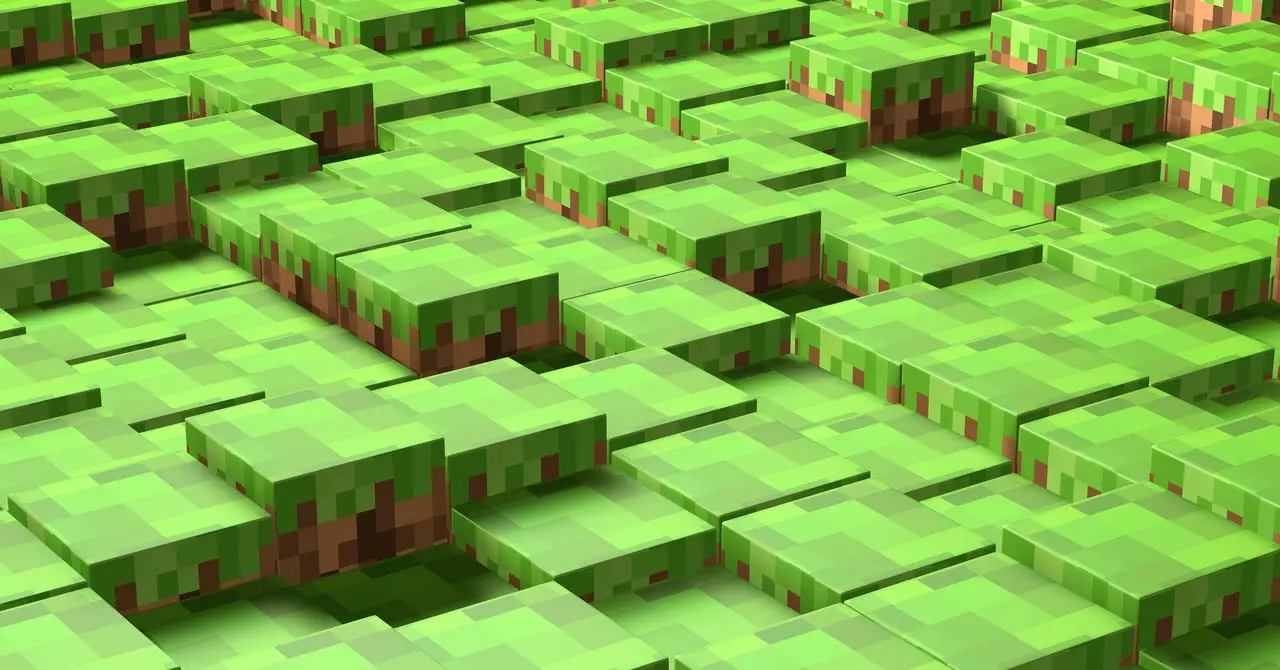Minecraft has captivated gamers for over a decade with its blend of quirky gameplay, limitless creativity, and an expansive open world. In a world where game cloning is commonplace, Oasis emerges as a peculiar offspring of the blocky behemoth. Instead of being merely a copy, Oasis takes a surreal twist by relying on artificial intelligence to determine its gameplay. Developed by the Israeli startup Decart in partnership with Etched, a custom silicon design firm, Oasis showcases the novel possibilities of hardware optimized for transformer-based AI, flickering to life through endless frames imagined by algorithms.
What sets Oasis apart is its use of a transformer AI model that generates each frame in response to player interactions and previous outputs. Unlike traditional game engines, which follow pre-coded paths and rules, Oasis feels more like an uncharted territory governed by unpredictable impulses that mimic the vast and diverse scenarios found in Minecraft. This AI-driven process operates similarly to a large language model but is uniquely tailored with a rich dataset derived from countless Minecraft gameplay scenarios. The resultant world is as much a place of creation as it is of uncertainty.
While Oasis can be played online free of charge, players find themselves entranced by its uncanny and occasionally surreal aesthetic. Snippets of daily mundanity are blurred with the bizarre—misshapen livestock, erratic staircases that lead to nowhere, and a shifting environment that feels as if it’s alive. The generated landscapes pulsate with life, but in a way that constantly subverts expectations. Players gaze into a blocky abyss, only to find it metamorphose under their scrutiny. Oasis embodies a realization of what happens when the conventional barriers of game design dissolve in favor of an unpredictable, AI-driven experience.
Engaging with Oasis invites players to embrace the absurdity and spontaneity that comes with AI-generated content. Users can even upload images, such as personal photographs, to serve as a foundation upon which the game explodes into whimsical landscapes. A player may choose to perceive their beloved pet, like a cat named Leona, reconstructed into a fantastical scene. This customization feature has spurred a wave of viral interest, encouraging gamers to experiment with the AI’s peculiarities.
As users explore this captivating playground, they indulge in attempts to manipulate its mechanics. Players find themselves rushing to “teleport” to various environments, with some even managing to land on eerie moon surfaces reminiscent of Minecraft’s enigmatic “The End.” These bursts of creativity and exploratory ambition speak to a yearning shared by gamers to push the boundaries of what is possible within virtual realms. Oasis’s whimsical allure lies in its inexplicable charm.
However, the appeal of Oasis does not diminish its inherent inconsistencies. Authors and academics who analyze the intersection of gaming and AI highlight the impracticalities of this approach in creating a structured gaming experience. Julian Togelius, a professor at New York University, notes that while generative AI is fascinating, it remains “an answer in search of a question.” This observation resonates strongly, as players are often left grappling with the erratic nature of the AI that strives to surprise but occasionally falters in coherence.
On the other hand, there is an understanding among developers and gaming experts that, despite its rough edges, Oasis signifies unexplored terrain for the future of gaming. Frank Lantz, a game designer, posits that Oasis straddles an “uncanny valley,” revealing a realm filled with potential. While its unrefined nature might deter some from viewing it as a viable game, it simultaneously provides fertile ground for imaginative game designers to cultivate something magical.
Ultimately, Oasis transcends being a mere Minecraft clone. It encapsulates a poignant exploration of generative AI in gaming—challenging traditional paradigms while inviting users to dive into its unpredictable embrace. The intertwining of AI and gameplay presents both an invitation to dream as well as a cautionary tale against unchecked innovation. As the gaming space evolves, one can only wonder where the fusion of AI and interactive experiences will lead next. Oasis stands at the precipice of this discussion, offering a unique glimpse into the future—teetering between enchantment and disarray.


Leave a Reply